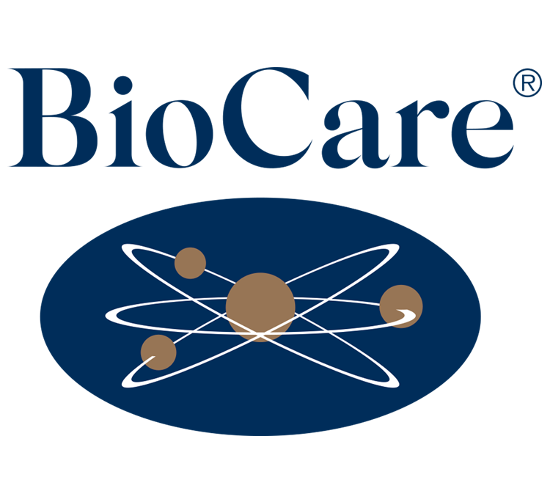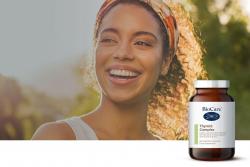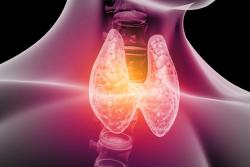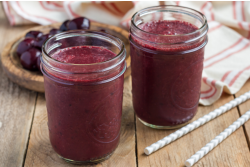Do you suffer from pain and discomfort, for example, in joints, skin or the gut? Or maybe you’re suffering from headaches, menstrual pain, or you’ve had an injury that is taking a long time to heal? Or perhaps you react to certain environmental substances like pollen, dust, fur, mould, or even certain foods you eat? These symptoms may indicate that you have too much inflammation in your body. But what is inflammation, and how can we manage it to reduce pain and improve our overall health?1
What is Inflammation?
Inflammation is a natural, protective and healing mechanism used by our immune system to respond at times of threat, e.g. presence of allergens or pathogens like bacteria or viruses, tissue damage, or injury. This process engages multiple immune cells and chemical messengers such as neutrophils, platelets, white blood cells, cytokines, or histamine. For example, when you cut your finger, your immune cells will be activated and will travel to the wound site, initiating the healing process. They will scan and clear the area of potential pathogens and debris, a clot will be formed to stop the bleeding, and eventually a scab will form on the surface to protect the area and allow further healing. While acute inflammation is beneficial, if prolonged, it can contribute to many chronic health conditions,1 including osteoporosis, joint issues such as arthritis, allergies, infertility, endometriosis, cardiovascular disease, and more.2
Inflammation is, therefore, a defense mechanism that is vital to our health. However, chronic inflammation is very damaging and very common in our modern society due to the cumulative effects of genetic and environmental factors.
What Drives Chronic Inflammation?
Whilst the obvious triggers for inflammation are pathogens or physical injury, many other everyday factors may either directly act as a threat to our body, or disable the body’s abilities to manage inflammation effectively.3
Diet
Our diet is one of the key drivers. For instance, high-glycaemic refined carbohydrates, processed foods, gluten-containing grains, dairy, sugar, artificial sweeteners, and alcohol are known as pro-inflammatory foods.2 Pro-inflammatory diet has been associated with an increased risk of developing cardiovascular issues, obesity, 3 gut permeability and dysbiosis.
Imbalance of gut bacteria
6An overgrowth of pathogenic microbes, especially if accompanied by low levels of beneficial bacteria (e.g. Lactobacilli & Bifidobacteria) can activate inflammatory processes, 4 and contribute to the development and progression on many chronic diseases, such as rheumatoid arthritis. 5
Stress and sleep
8 During stress, our adrenal glands release the hormone cortisol, which normally has anti-inflammatory activity, but it loses that effect if it’s chronically elevated, therefore resulting in more inflammation. 6 When our adrenals are forced to work harder, this, in turn, can result in poor control of histamine levels, which has pro-inflammatory effects and is particularly elevated in allergies. 7 Furthermore, sleep is our golden opportunity for rest and repair, and poor-quality sleep or sleep disturbances are prevalent in those with asthma, allergic rhinitis, and food allergies. 8 Research also shows that our sleep hormone, melatonin, has a profound ability to modulate and strengthen the immune system, mainly thanks to its anti-inflammatory and antioxidant properties. 9 In addition, we tend to reach for more processed foods and sugary snacks when we are stressed, or when our sleep is compromised.
Nutrient deficiencies
Certain nutrient deficiencies, including vitamin D, can be linked with inflammatory conditions, such as arthritis, asthma, inflammatory bowel disease or infections.10 In addition, low intake of omega-3 fatty acids has been associated with increased production of pro-inflammatory enzymes and cytokines such as COX-2, tumor necrosis factor (TNF)-alpha, and interleukin (IL)-1beta.11 Lack of essential fatty acids has also been linked with a higher level of pain and stiffness in the joints.12 The structural strength of joins and bone mineral density is also directly affected by collagen. Collagen synthesis can be impaired by many environmental or lifestyle factors, including exposure to toxins 13, or vitamin C deficiency, adding extra pressure.
Exposure to toxins
Exposure to environmental chemicals, such as cigarette smoke, pesticides, mould and pollen, can contribute to inflammation and act as immune disruptors.14 If our immune response is too sensitive to immune challenges from our external environment (e.g. dust mites, pollen), we can become more susceptible to developing allergies. Even histamine-rich foods such as aged cheeses and cured meats or sulphites from wine or dried fruit15 can add to the histamine load, compromising the body’s natural detoxification process of clearing pro-inflammatory histamine. 18
So, what are the key dietary and lifestyle approaches we can implement to decrease inflammation in our body and balance our immune system?
Dietary Support for Inflammation
- Increase intake of oily fish, berries, vegetables, nuts, and seeds for antioxidants and essential fatty acids, especially omega-3s due to their anti-inflammatory properties.16
- Add anti-inflammatory herbs and spices to meals such as turmeric, ginger, rosemary, cayenne pepper etc. Some spices such as turmeric, cardamom, ginger or rosemary, can suppress inflammatory pathways, for instance, by suppressing cytokine production.17
- Incorporate a wide variety of plants of different colours to ensure a diverse daily intake of immune-supportive nutrients and antioxidants.
- Include pro- and prebiotic-rich foods: sauerkraut, kimchi, kefir, and kombucha, leeks, onions, cabbage etc. to support gut microflora balance.
Lifestyle Support for Inflammation
- Reduce exposure to environmental toxins by eating more organic food, avoiding plastic, and using natural skincare and cleaning products.
- Reduce stress and prioritise relaxation by practicing mindfulness, breathing techniques or meditation which have been found to improve sleep.18 Try to engage in hobbies (arts and crafts, reading, hiking, drawing etc.) since participating in physical and social activities has been linked with improved sleep quality, duration and efficiency.19
- Ensure a good sleeping routine by reducing exposure to blue light in the evening (TV, phone, laptop etc.), avoiding eating late in the evening and sleeping in a cool, dark room. Studies shown that blue light exposure in the evening can decrease sleep quality and duration.20
- Incorporate daily physical activity and time spent in nature. Studies have shown that daily exercise can not only reduce weight but also could be effective in reducing chronic inflammation.1
Our Top Six Nutrients for Inflammation
Omega-3 fatty acids
Omega-3 fatty acids found in oily fish, free-range animal products, chia and flaxseeds, have anti-inflammatory and immune-balancing effects. Many clinical studies demonstrate their benefits in rheumatoid arthritis, inflammatory skin conditions such as eczema21 and psoriasis,22 and inflammatory bowel disorders.23 They decrease triglycerides and cholesterol levels,24 and all cardiovascular events,25 27 have anti-diabetic effects, 26,27 and prevent the development of insulin resistance. 28 32 They’ve also been found to be effective in supporting 24 25 mental health problems such as depression ,29 bipolar disorder, 30 and anxiety, 31 as well as reducing 36 37 joint stiffness 32, 33 and pain.33
Vitamin D
Vitamin D plays a vital role in modulating immune responses and the production of proinflammatory cells.10, 34 It reduces intestinal permeability and therefore leakage of food proteins and toxins from the gut which could trigger inflammation, 35 effectively reducing symptom severity in Crohn’s disease. 36 A deficiency in this essential nutrient can be linked with chronic inflammatory diseases, including cardiovascular issues, asthma, and inflammatory bowel disease. 10 It also enhances innate immunity and inhibits the development of autoimmunity by regulating immune activation. 37 Poor maternal vitamin D status is linked to the development of allergy, 38 and higher levels may protect against asthmatic wheezing in young children. 39
Curcumin/ Turmeric
Curcumin is the active, most effective component of turmeric and reduces inflammatory cytokines. It can be used in a variety of inflammatory conditions, from immune system support, healthy fat metabolism, and detoxification to decreasing inflammation in the connective tissue. For instance, studies have shown that curcumin can help to modulate the gut microbiome, reduce liver inflammation and support healthy lipid metabolism in NAFLD, 40 decrease inflammation in osteoarthritis 41 and rheumatoid arthritis. 42, 43 One study on individuals with osteoarthritis showed that the effectiveness of curcumin was comparable to ibuprofen.41 Another study revealed significant improvements in pain, walking performance, and range of motion after just 5 days of supplementation of 500 mg of Curcuwim Ultra + as well as reduced pain and stiffness, enhancements in knee extension and flexion, decreased joint discomfort and inflammation, improved knee muscle strength, and reduced medication usage after 28, 56, and 84 days compared to the placebo group. 44 Curcumin can also reduce the severity of PMS symptoms through its anti-inflammatory effects. 45 Curcumin is very poorly absorbed so it is essential to emulsify it to enable effective delivery from the gut to the rest of the body. The Ultra+ emulsification technology makes it 144 times better absorbed than standard curcumin and provides a longer-lasting effect in the body, with high blood levels even after 12 hours. 44
Ginger
Ginger is anti-inflammatory and anti-bacterial,46 and it has been shown to significantly reduce pain in people with osteoarthritis. 47 Ginger has antispasmodic, anti-inflammatory, and carminative properties. Supplementation daily for 12 weeks significantly improved the quality of life in patients with ulcerative colitis through reduction of disease severity.45 Ginger can decrease serum triglyceride concentration, LDL cholesterol and may reduce the development of atherosclerosis.48 Studies have also shown that ginger improves blood glucose and fat regulation.49
Boswellia
Boswellia, or Indian Frankincense, has been used in traditional medicine for centuries and has been demonstrated to have significant activity in supporting inflammatory diseases such as rheumatoid arthritis, chronic bronchitis, asthma and chronic inflammatory bowel diseases (ulcerative colitis and Crohn’s disease).50,51 Research showed that a 4-week supplementation with Boswellia may be an effective and safe treatment option for patients with osteoarthritis.52 Another study on osteoarthritis demonstrated a significant reduction in pain, stiffness, physical function and improvement in the quality of life after 90 days of supplementation.53 Even dosages as low as 100mg of Boswellia extract for 90 days were identified to improve symptoms compared to placebo.54
Quercetin
Quercetin is a naturally occurring flavonoid found in many fruits and vegetables, such as citrus fruits, apples, onions, parsley, sage, and tea. It has an inhibiting action on lipoxygenase, an enzyme that contributes to inflammation and the release of histamine 55 and inflammatory prostaglandins. 56 Studies have shown that quercetin helps to reduce lung inflammation in chronic obstructive pulmonary disease (COPD) 57 and possesses antiviral properties against a number of viruses including influenza, herpes simplex, rhinovirus, coxsackievirus, poliovirus, hepatitis, and coronavirus. 58 It is particularly beneficial for allergies and infections.
Chronic inflammation is a very complex issue, and hence it needs to be targeted from different angles. There are lots of anti-inflammatory nutrients alongside dietary and lifestyle approaches that can be implemented to balance the immune system and decrease the symptoms related to high inflammatory load.
References
1. Beavers KM, Brinkley TE, Nicklas BJ. Effect of exercise training on chronic inflammation. Clin Chim Acta. 2010;411(0):785. doi:10.1016/J.CCA.2010.02.069
2. Ma X, Nan F, Liang H, et al. Excessive intake of sugar: An accomplice of inflammation. Front Immunol. 2022;13. doi:10.3389/FIMMU.2022.988481
3. Da Silva A, Felício MB, Caldas APS, et al. Pro-inflammatory diet is associated with a high number of cardiovascular events and ultra-processed foods consumption in patients in secondary care. Public Health Nutr. 2021;24(11):3331-3340. doi:10.1017/S136898002000378X
4. Elias-Oliveira J, Leite JA, Pereira ÍS, et al. NLR and Intestinal Dysbiosis-Associated Inflammatory Illness: Drivers or Dampers? Front Immunol. 2020;11:562489. doi:10.3389/FIMMU.2020.01810/BIBTEX
5. Zhao T, Wei Y, Zhu Y, et al. Gut microbiota and rheumatoid arthritis: From pathogenesis to novel therapeutic opportunities. Front Immunol. 2022;13. doi:10.3389/FIMMU.2022.1007165
6. Morey JN, Boggero IA, Scott AB, Segerstrom SC. Current Directions in Stress and Human Immune Function. Curr Opin Psychol. 2015;5:13. doi:10.1016/J.COPSYC.2015.03.007
7. Liu YZ, Wang YX, Jiang CL. Inflammation: The Common Pathway of Stress-Related Diseases. Front Hum Neurosci. 2017;11. doi:10.3389/FNHUM.2017.00316
8. Koinis-Mitchell D, Craig T, Esteban CA, Klein RB. Sleep and allergic disease: A summary of the literature and future directions for research. J Allergy Clin Immunol. 2012;130(6):1275. doi:10.1016/J.JACI.2012.06.026
9. Hardeland R. Melatonin and inflammation—Story of a double-edged blade. J Pineal Res. 2018;65(4):e12525. doi:10.1111/JPI.12525
10. Yin K, Agrawal DK. Vitamin D and inflammatory diseases. J Inflamm Res. 2014;7(1):69. doi:10.2147/JIR.S63898
11. Kang JX, Weylandt KH. Modulation of inflammatory cytokines by omega-3 fatty acids. Subcell Biochem. 2008;49:133-143. doi:10.1007/978-1-4020-8831-5_5
12. Goldberg RJ, Katz J. A meta-analysis of the analgesic effects of omega-3 polyunsaturated fatty acid supplementation for inflammatory joint pain. Pain. 2007;129(1-2):210-223. doi:10.1016/J.PAIN.2007.01.020
13. D’amico R, Gugliandolo E, Cordaro M, et al. Toxic Effects of Endocrine Disruptor Exposure on Collagen-Induced Arthritis. Biomolecules. 2022;12(4). doi:10.3390/BIOM12040564
14. Khan MF, Wang H. Environmental Exposures and Autoimmune Diseases: Contribution of Gut Microbiome. Front Immunol. 2019;10:3094. doi:10.3389/FIMMU.2019.03094
15. Vally H, Misso NLA. Adverse reactions to the sulphite additives. Gastroenterol Hepatol Bed Bench. 2012;5(1):16. Accessed November 2, 2023. /pmc/articles/PMC4017440/
16. Dinicolantonio JJ, O’Keefe JH. Importance of maintaining a low omega-6/omega-3 ratio for reducing inflammation. Open Heart. 2018;5(2):946. doi:10.1136/openhrt-2018-000946
17. Kunnumakkara AB, Sailo BL, Banik K, et al. Chronic diseases, inflammation, and spices: how are they linked? J Transl Med. 2018;16(1):14. doi:10.1186/S12967-018-1381-2
18. Rusch HL, Rosario M, Levison LM, et al. The effect of mindfulness meditation on sleep quality: a systematic review and meta-analysis of randomized controlled trials. Ann N Y Acad Sci. 2019;1445(1):5. doi:10.1111/NYAS.13996
19. Hellström A, Hellström P, Willman A, Fagerström C. Association between Sleep Disturbances and Leisure Activities in the Elderly: A Comparison between Men and Women. Sleep Disord. 2014;2014:1-11. doi:10.1155/2014/595208
20. Silvani MI, Werder R, Perret C. The influence of blue light on sleep, performance and wellbeing in young adults: A systematic review. Front Physiol. 2022;13. doi:10.3389/FPHYS.2022.943108
21. BJØRNEBOE A, SØYLAND E, BJØRNEBOE GA, RAJKA G, DREVON CA. Effect of n‐3 fatty acid supplement to patients with atopic dermatitis. J Intern Med. 1989;225(731 S):233-236. doi:10.1111/j.1365-2796.1989.tb01462.x
22. Mayser P, Mrowietz U, Arenberger P, et al. ω-3 Fatty acid-based lipid infusion in patients with chronic plaque psoriasis: Results of a double-blind, randomized, placebo-controlled, multicenter trial. J Am Acad Dermatol. 1998;38(4):539-547. doi:10.1016/S0190-9622(98)70114-8
23. Mori TA, Beilin LJ. Omega-3 fatty acids and inflammation. Curr Atheroscler Rep. 2004;6(6):461-467. doi:10.1007/S11883-004-0087-5
24. Von Schacky C. n-3 PUFA in CVD: Influence of cytokine polymorphism. Proceedings of the Nutrition Society. 2007;66(2):166-170. doi:10.1017/S0029665107005411
25. Calder PC. The role of marine omega-3 (n-3) fatty acids in inflammatory processes, atherosclerosis and plaque stability. Mol Nutr Food Res. 2012;56(7):1073-1080. doi:10.1002/MNFR.201100710
26. Spencer M, Finlin BS, Unal R, et al. Omega-3 fatty acids reduce adipose tissue macrophages in human subjects with insulin resistance. Diabetes. 2013;62(5):1709-1717. doi:10.2337/DB12-1042
27. Lewis JE, Melillo AB, Tiozzo E, et al. A double-blind, randomized clinical trial of dietary supplementation on cognitive and immune functioning in healthy older adults. BMC Complement Altern Med. 2014;14. doi:10.1186/1472-6882-14-43
28. Podolin DA, Gayles EC, Wei Y, Thresher JS, Pagliassotti MJ. Menhaden oil prevents but does not reverse sucrose-induced insulin resistance in rats. Am J Physiol Regul Integr Comp Physiol. 1998;274(3 43-3). doi:10.1152/ajpregu.1998.274.3.r840
29. Colangelo LA, He K, Whooley MA, Daviglus ML, Liu K. Higher dietary intake of long-chain ω-3 polyunsaturated fatty acids is inversely associated with depressive symptoms in women. Nutrition. 2009;25(10):1011-1019. doi:10.1016/j.nut.2008.12.008
30. Lin PY, Su KP. A meta-analytic review of double-blind, placebo-controlled trials of antidepressant efficacy of omega-3 fatty acids. Journal of Clinical Psychiatry. 2007;68(7):1056-1061. doi:10.4088/JCP.v68n0712
31. Yehuda S, Rabinovitz S, Mostofsky DI. Mixture of essential fatty acids lowers test anxiety. Nutr Neurosci. 2005;8(4):265-267. doi:10.1080/10284150500445795
32. Coras R, Kavanaugh A, Boyd T, et al. Pro- and anti-inflammatory eicosanoids in psoriatic arthritis. Metabolomics. 2019;15(4). doi:10.1007/s11306-019-1527-0
33. Kruger MC, Coetzer H, Winter R De, Gericke G, Papendorp DH Van. Calcium, gamma-linolenic acid and eicosapentaenoic acid supplementation in senile osteoporosis. Aging Clin Exp Res. 1998;10(5):385-394. doi:10.1007/bf03339885
34. Antico A, Tampoia M, Tozzoli R, Bizzaro N. Can supplementation with vitamin D reduce the risk or modify the course of autoimmune diseases? A systematic review of the literature. Autoimmun Rev. 2012;12(2):127-136. doi:10.1016/j.autrev.2012.07.007
35. Kong J, Zhang Z, Musch MW, et al. Novel role of the vitamin D receptor in maintaining the integrity of the intestinal mucosal barrier. Am J Physiol Gastrointest Liver Physiol. 2007;294(1). doi:10.1152/ajpgi.00398.2007
36. Yang L, Weaver V, Smith JP, Bingaman S, Hartman TJ, Cantorna MT. Therapeutic effect of vitamin d supplementation in a pilot study of crohn’s patients. Clin Transl Gastroenterol. 2013;4(4):e33. doi:10.1038/ctg.2013.1
37. Griffin MD, Xing N, Kumar R. Vitamin D and its analogs as regulators of immune activation and antigen presentation. Annu Rev Nutr. 2003;23:117-145. doi:10.1146/annurev.nutr.23.011702.073114
38. Erkkola M, Kaila M, Nwaru BI, et al. Maternal vitamin D intake during pregnancy is inversely associated with asthma and allergic rhinitis in 5-year-old children. Clinical & Experimental Allergy. 2009;39(6):875-882. doi:10.1111/J.1365-2222.2009.03234.X
39. Litonjua AA. Childhood asthma may be a consequence of vitamin D deficiency. Curr Opin Allergy Clin Immunol. 2009;9(3):202-207. doi:10.1097/ACI.0b013e32832b36cd
40. Li R, Yao Y, Gao P, Bu S. The Therapeutic Efficacy of Curcumin vs. Metformin in Modulating the Gut Microbiota in NAFLD Rats: A Comparative Study. Front Microbiol. 2021;11:3584. doi:10.3389/FMICB.2020.555293/BIBTEX
41. Kuptniratsaikul V, Dajpratham P, Taechaarpornkul W, et al. Efficacy and safety of Curcuma domestica extracts compared with ibuprofen in patients with knee osteoarthritis: a multicenter study. Clin Interv Aging. 2014;9:451. doi:10.2147/CIA.S58535
42. JK J, T H, WL H, HM B. The antioxidants curcumin and quercetin inhibit inflammatory processes associated with arthritis. Inflamm Res. 2006;55(4):168-175. doi:10.1007/S00011-006-0067-Z
43. Curcumin induces apoptosis and inhibits prostaglandin E(2) production in synovial fibroblasts of patients with rheumatoid arthritis - PubMed. Accessed September 7, 2021. https://pubmed.ncbi.nlm.nih.gov/17671742/
44. Efficacy-and-Safety-of-a-Highly-Bioavailable--Curcumin-Formulation-in-Modulating-Outcomes-of-Mild-Knee-Osteoarthritis--Multi-Centric-Randomized-Double-Blind-Placebo (002).
45. Khayat S, Fanaei H, Kheirkhah M, Moghadam ZB, Kasaeian A, Javadimehr M. Curcumin attenuates severity of premenstrual syndrome symptoms: A randomized, double-blind, placebo-controlled trial. Complement Ther Med. 2015;23(3):318-324. doi:10.1016/J.CTIM.2015.04.001
46. Friedman M, Henika PR, Mandrell RE. Bactericidal activities of plant essential oils and some of their isolated constituents against Campylobacter jejuni, Escherichia coli, Listeria monocytogenes, and Salmonella enterica. J Food Prot. 2002;65(10):1545-1560. doi:10.4315/0362-028X-65.10.1545
47. Bartels EM, Folmer VN, Bliddal H, et al. Efficacy and safety of ginger in osteoarthritis patients: a meta-analysis of randomized placebo-controlled trials. Osteoarthritis Cartilage. 2015;23(1):13-21. doi:10.1016/J.JOCA.2014.09.024
48. Fuhrman B, Rosenblat M, Hayek T, Coleman R, Aviram M. Biochemical and Molecular Action of Nutrients Ginger Extract Consumption Reduces Plasma Cholesterol, Inhibits LDL Oxidation and Attenuates Development of Atherosclerosis in Atherosclerotic, Apolipoprotein E-Deficient Mice. Vol 130.; 2000. https://academic.oup.com/jn/article/130/5/1124/4686485
49. Jacob S, Ruus P, Hermann R, et al. Oral administration of rac-α-lipoic acid modulates insulin sensitivity in patients with type-2 diabetes mellitus: A placebo-controlled pilot trial. Free Radic Biol Med. 1999;27(3-4):309-314. doi:10.1016/S0891-5849(99)00089-1
50. Boswellia: an evidence-based systematic review by the Natural Standard Research Collaboration - PubMed. Accessed August 15, 2023. https://pubmed.ncbi.nlm.nih.gov/15829470/
51. Singh GB, Atal CK. Pharmacology of an extract of salai guggal ex-Boswellia serrata, a new non-steroidal anti-inflammatory agent. Agents Actions. 1986;18(3-4):407-412. doi:10.1007/BF01965005/METRICS
52. Yu G, Xiang W, Zhang T, Zeng L, Yang K, Li J. Effectiveness of Boswellia and Boswellia extract for osteoarthritis patients: a systematic review and meta-analysis. BMC Complement Med Ther. 2020;20(1). doi:10.1186/S12906-020-02985-6
53. Sengupta K, Krishnaraju A V., Vishal AA, et al. Comparative Efficacy and Tolerability of 5-Loxin® and Aflapin® Against Osteoarthritis of the Knee: A Double Blind, Randomized, Placebo Controlled Clinical Study. Int J Med Sci. 2010;7(6):366. doi:10.7150/IJMS.7.366
54. Cameron M, Chrubasik S. Oral herbal therapies for treating osteoarthritis. Cochrane Database Syst Rev. 2014;2014(5). doi:10.1002/14651858.CD002947.PUB2
55. Otsuka H, Inaba M, Fujikura T, Kunitomo M. Histochemical and functional characteristics of metachromatic cells in the nasal epithelium in allergic rhinitis: Studies of nasal scrapings and their dispersed cells. J Allergy Clin Immunol. 1995;96(4):528-536. doi:10.1016/S0091-6749(95)70297-0
56. Xiao X, Shi D, Liu L, et al. Quercetin suppresses cyclooxygenase-2 expression and angiogenesis through inactivation of P300 signaling. PLoS One. 2011;6(8):22934. doi:10.1371/journal.pone.0022934
57. Han MK, Barreto TA, Martinez FJ, Comstock AT, Sajjan US. Randomised clinical trial to determine the safety of quercetin supplementation in patients with chronic obstructive pulmonary disease. BMJ Open Respir Res. 2020;7(1). doi:10.1136/bmjresp-2018-000392
58. Agrawal PK, Agrawal C, Blunden G. Quercetin: Antiviral Significance and Possible COVID-19 Integrative Considerations. Nat Prod Commun. 2020;15(12):1-10. doi:10.1177/1934578X20976293






